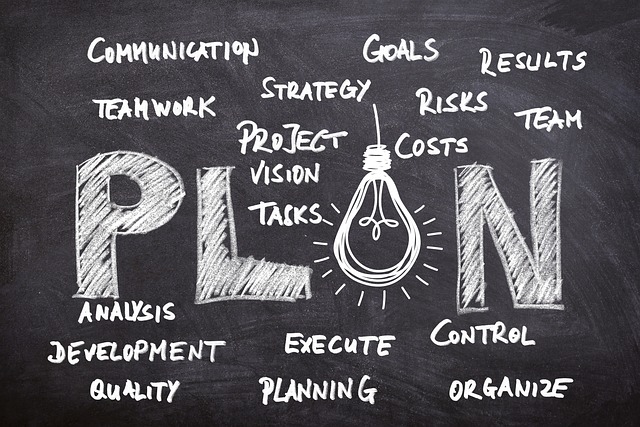The Role of Strategic Planning in Enhancing Operational Efficiency
Every organization, whether a startup or an established enterprise, has one ultimate goal: success. Achieving business success often boils down to how effectively a company utilizes its resources. This brings us to the pivotal concept of operational efficiency. Operational efficiency refers to the ability of an organization to deliver products or services to its customers in the most cost-effective manner without compromising quality. Strategic planning plays an integral role in fostering this efficiency. As organizations prioritize their goals, they must develop specific strategies for overcoming obstacles and leveraging strengths. But how does strategic planning truly elevate operational efficiency? Let’s unravel this connection step by step.
Understanding Strategic Planning
Strategic planning is a systematic process that aids organizations in defining their direction. It lays out not only their long-term goals but the means necessary to achieve those objectives. By evaluating their internal and external environments, companies can understand their unique position in the market. This analysis often includes SWOT (Strengths, Weaknesses, Opportunities, Threats) assessments that help businesses identify areas where they can improve operational efficiency. Moreover, strategic planning connects various aspects of an organization, like marketing, sales, and finance, guiding them to work cohesively towards a common goal.
When teams participate in the strategic planning process, they become more aligned with the company’s vision and mission. This alignment is crucial because it fosters a culture of collaboration. Each team understands how their specific roles contribute to overarching company objectives. For instance, if your strategic plan identifies cost reduction as a goal, every department, from IT to human resources, can find ways to cut costs without impacting the quality of their outputs. In this way, strategic planning serves both as a map and compass for organizations, directing them toward profitable paths while ensuring operational efficiency.
The Importance of Setting Clear Objectives
Setting clear, measurable objectives is one of the cornerstones of effective strategic planning. These goals provide a framework for decision-making across the organization. For instance, when a company sets a specific goal to reduce production costs by 15% within the next year, it is then able to assess different operational strategies and prioritize those that are most likely to realize that objective. Clear goals help in aligning resources and practices throughout the organization. When everyone knows the target, they are more likely to work in harmony and achieve it.
Furthermore, these objectives should resonate with the company’s vision and mission. When staff understands how their daily tasks contribute to the larger narrative, they become more engaged. Engagement drives performance, and consequently, operational efficiency sees a boost. It’s not just about setting a generic goal; crafting goals that motivate and inspire individuals fosters a workforce willing to go above and beyond in every aspect of their work. And when people are motivated, they solve problems quicker, innovate more, and reduce waste, all leading to improved operational efficiency.
Aligning Resources with Goals
Effective strategic planning ensures that resources—be they human, financial, or technological—align with the set objectives. It emphasizes optimal resource allocation, which is vital for enhancing operational efficiency. For example, if your business evaluates the market and realizes that a particular product line is not performing as expected, strategic planning could dictate a shift in resources toward more profitable ventures. Many organizations struggle with resource misallocation, often due to outdated plans or lack of foresight. This miscalculation can lead to waste and inefficiencies, muddying the waters of operational success. Strategic planning allows companies to adapt and reallocate effectively, positioning themselves better in a competitive landscape.
When talking about resource allocation, it’s crucial to remember that involving your team is essential. Employees at all levels often have insight into how resources are utilized. By fostering a culture of open communication, organizations can gather invaluable feedback on where resources might be better allocated. This collective wisdom not only empowers employees but also enhances overall operational efficiency. The synergy achieved by aligning resources with objectives translates directly into improved productivity and effectiveness.
Continuous Monitoring and Assessment
Strategic planning is not a one-time event; it requires continuous assessment and adjustment. This ongoing process is key to ensuring that operational efficiency remains a priority. By regularly monitoring objectives and performance metrics, companies can identify areas that need improvement. This could involve integrating key performance indicators (KPIs) into the strategic framework. These KPIs provide measurable values that help teams understand how well they are performing against objectives. Candid assessments allow organizations to address inefficiencies promptly, preventing larger issues down the line.
Moreover, an adaptable strategic plan encourages innovation. As companies assess their progress, they might discover new opportunities or technological advancements that can further enhance operational efficiency. By embracing change rather than resisting it, organizations foster a culture that promotes continual improvement. The world of business is dynamic, and being able to pivot based on real-time data makes a direct impact on an organization’s efficiency and effectiveness. This proactive approach ensures that operational excellence remains at the forefront, aiding in the ultimate pursuit of business success.
Fostering a Culture of Innovation and Adaptability
At the heart of operational efficiency lies a culture that values innovation and adaptability. Strategic planning can create a framework for fostering such a culture. When organizations establish an environment that encourages creative thinking and problem-solving, they enable their teams to identify inefficiencies and propose improvements. This, in turn, leads to a more agile organization capable of responding quickly to market demands. For instance, companies that encourage their employees to share innovative ideas often find themselves ahead of the curve, adopting new technologies and methods before their competitors.
To cultivate this culture, leaders must involve employees in the planning process. By inviting team members to contribute their insights, organizations foster a sense of ownership. This inclusive approach not only makes employees feel valued but often results in more creative solutions. When every level of the organization is in sync with its strategic goals, aligned around operational efficiency, the barriers to innovation significantly lower. Creative voices emerge, leading to operational breakthroughs and increased agility in the face of changing market conditions.
The Interplay Between Strategic Planning and Technology
In our digital age, technology plays a transformative role in enhancing operational efficiency. Strategic planning must incorporate technology assessments that align with the organization’s goals. The right tools can support data analytics, automation, and communication processes, streamlining operations significantly. Investing in technology based on the insights garnered from strategic planning paves the way for operational enhancements. For instance, a retail company may adopt an inventory management system driven by data analysis; this can reduce waste while improving customer satisfaction through efficient stock management.
Moreover, technology fosters collaboration across departments. Enhanced communication channels facilitate the seamless exchange of information, breaking down silos between teams. With strategic planning helping to define the technology roadmap, organizations can better leverage investments, ensuring they enhance—not complicate—operational processes. It’s essential to select technologies that resonate well with the goals of strategic initiatives. This ingrained understanding leads to improved workflows, reduced redundancies, and ultimately, operational efficiency throughout the organization.
Conclusion
In conclusion, the role of strategic planning in enhancing operational efficiency cannot be overstated. By setting clear objectives, aligning resources, continuously monitoring progress, fostering innovation, and embracing technology, organizations can navigate the complexities of today’s business environment effectively. Each of these elements works cohesively to drive operational excellence. To harness the power of strategic planning, businesses should embrace it as a dynamic process, ingrained in their culture, rather than a static one-off exercise. Those who do stand the best chance of optimizing their operations, achieving greater efficiency, and securing long-term business success.
FAQ
1. What is operational efficiency?
Operational efficiency is the ability of an organization to deliver products or services efficiently, minimizing costs while maintaining quality. This concept focuses on utilizing resources effectively to achieve the desired output.
2. Why is strategic planning important?
Strategic planning is crucial because it helps organizations define their direction, set goals, and allocate resources in alignment with their objectives. It creates a roadmap for success, ensuring everyone works towards the same targets.
3. How can organizations improve operational efficiency through strategic planning?
Organizations can improve operational efficiency by setting clear, measurable objectives, aligning resources with goals, fostering a culture of innovation, continuously monitoring performance, and leveraging technology to streamline processes.
4. How often should strategic planning be updated?
Strategic planning should be a continuous process. Organizations should regularly review and update their plans based on changing market conditions, internal performance metrics, and emerging opportunities or threats.
5. What role does technology play in enhancing operational efficiency?
Technology enhances operational efficiency by streamlining processes, improving data analysis, and facilitating better communication among teams. Proper integration of technology helps organizations minimize waste and optimize workflows.



